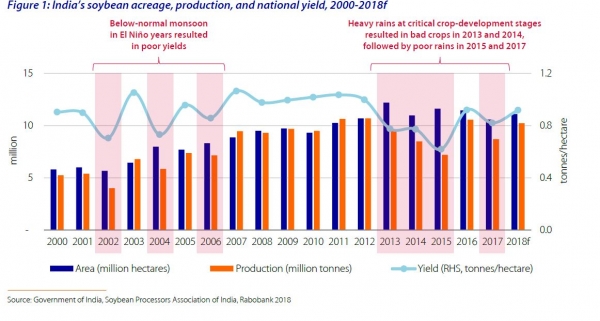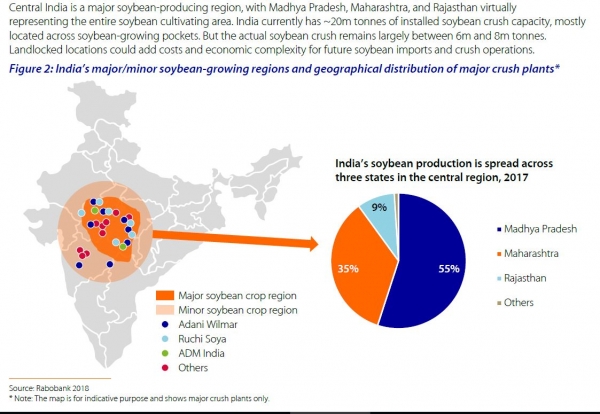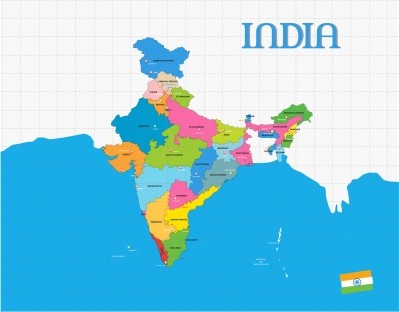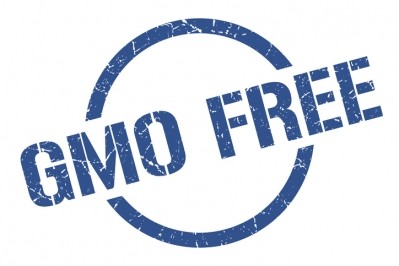India needs to develop a feed protein strategy for the future: Rabobank
While India is currently able to meet its soymeal demand, fluctuation in domestic production remain a concern for future self-sufficiency, noted Rabobank in a report on the soybean sector in that market.
“Structural policy changes will be needed to increase India’s domestic soybean production in order to fulfil growing domestic soymeal demand and to avoid a future import situation, including investments in better agri practices, seed tech and micro-irrigation,” argues Rohit Dhanda, analyst, grains and oilseeds, Rabobank.
India is the fifth-largest producer of soybeans globally, after the US, Brazil and Argentina and China. In the past, it was a major soy exporter to the Middle East, South East Asia and the EU, but is has lost out to South American soy exporters in recent years due to having to meet local demand and also due to domestic production constraints. Its soybean meal supplies have been volatile in recent years, due to adverse weather, particularly in 2014, 2015, and 2017.
Meat and egg demand
Economic growth and increasing disposable incomes have resulted in a shift towards animal protein diets in India, with poultry and eggs affordable and socially acceptable, said Rabobank.
Net consumption of poultry grew there at 7% CAGR, from 2.2m tons in 2007 to 4.4m tons in 2017. That growth has seen a major hike in soybean meal consumption – at a rate of 19% CAGR, soybean meal use domestically went from 0.8m tons in 2007 to 5.4m tons in 2017, according to the report.
India’s soybean production grew at a 6% CAGR between 2000 and 2012 reaching 10.7m tons in 2012. However, despite seeing a growth trend in terms of net planted acres, domestic production decreased to 8.7m tons in 2017 due to low yields, said the analysts.
With the current domestic demand for soybean meal, limited domestic supplies, and diminishing export volumes, India will have to develop a future protein strategy, warns Rabobank. It will have to invest to increase local production.
Feed protein policy needed
If domestic production remains unable to meet demand, India will need to open its market to imports of soybean meal from the global market, said the analysts. However, India does not allow imports of GMO soybeans currently.
It could increase its imports of non-GMO soybeans in the future, said the team. However, the Rabobank soybean market specialists noted that only 12% of global soybeans are non-GMO in nature, including India’s own domestic production. Depending on supplies in individual years, importing such big volumes of non-GMO soybeans or soybean meal in the future could also be prohibitively expensive for India, due to the attached premium compared to GMO soybeans, they warned. Higher soybean meal prices would also impact the profitability of the domestic poultry industry, added the analysts.
“The government’s future policy decisions to systematically increase domestic soy production or allow soybean or soybean meal imports will be critical.”










